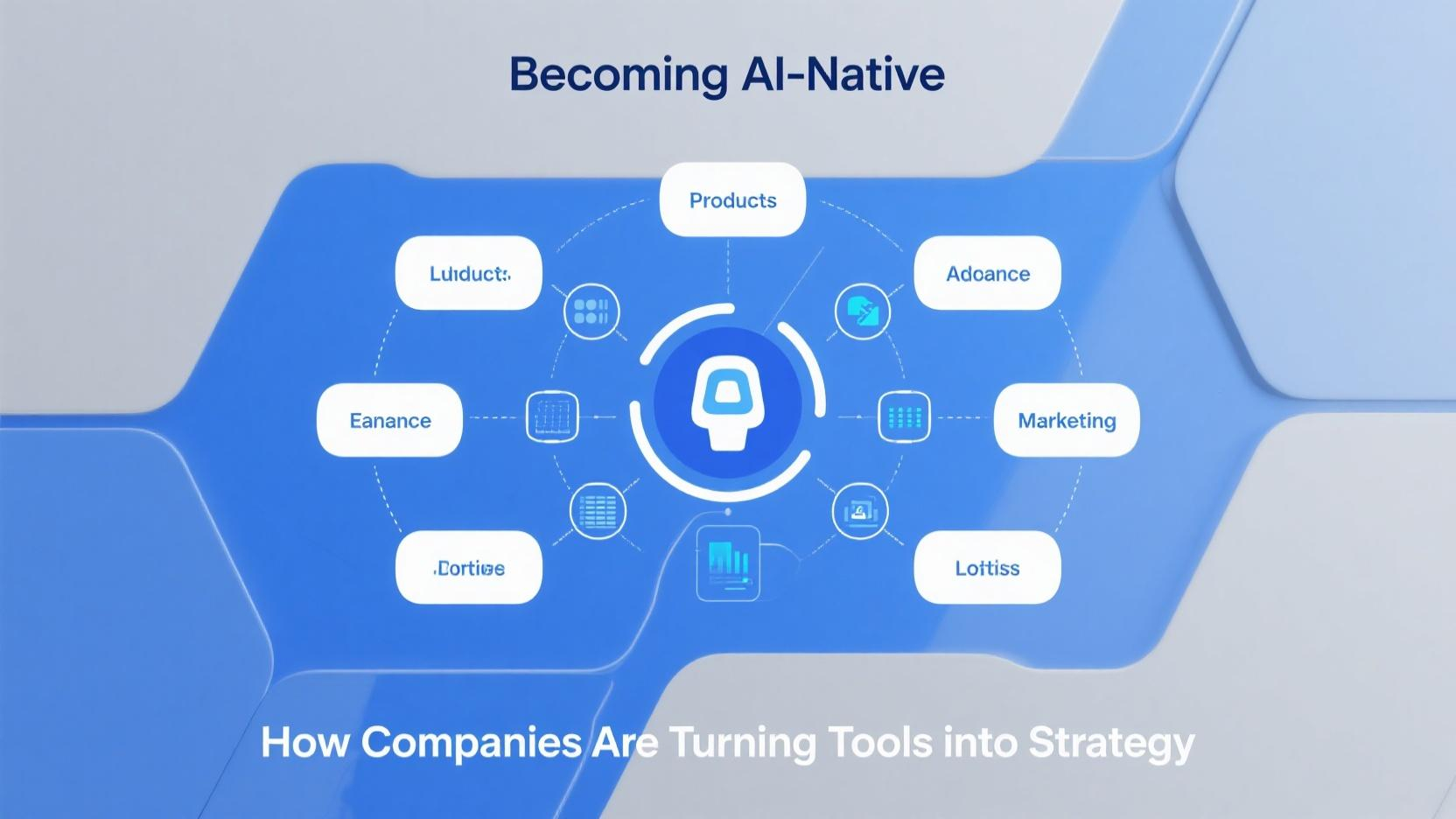It’s No Longer About Using AI. It’s About Thinking With It.
AI adoption used to mean deploying a chatbot or plugging predictive analytics into sales. But leading enterprises are now pushing further — they’re rebuilding their business DNA around AI. To stay competitive, companies must evolve beyond experimentation and become AI-native organizations, where machine intelligence is embedded in every strategic function.

What Does “AI-Native” Mean?
Being AI-native isn’t just about tools. It means:
AI is part of core workflows, not an afterthought
Data is treated as a strategic asset, with pipelines and governance in place
Leadership understands, funds, and prioritizes AI transformation
Business units are empowered to design and own AI use cases
For instance, Ant Group (Alipay’s parent company) embeds AI across credit scoring, risk management, marketing, and fraud detection — all running in real time with human oversight.
Rewiring the Business Stack
AI-native companies often rethink how they’re structured:
Product teams co-develop with data scientists
Customer journeys are optimized via reinforcement learning models
Operations use AI for supply-demand alignment and labor planning
Finance and strategy use digital twins and scenario engines
Take Tesla, whose vertical stack — from manufacturing to fleet data — is built to continuously feed and improve its AI models. The result? Cars that learn while they drive, factories that self-optimize.
Building the Culture: AI Fluency Across Roles
To become AI-native, companies must invest in:
Cross-training programs so marketers understand ML basics and engineers grasp customer impact
AI ethics and governance teams to manage risk, bias, and explainability
Low-code tools and ML platforms that democratize AI access for non-technical teams
Airbnb, for example, trained over 1,000 employees in applied machine learning and built an internal “AI college” to scale literacy.
Challenges to Overcome
The AI-native journey isn’t easy. It requires:

Cultural change to shift from HIPPOs (Highest Paid Person’s Opinion) to data-driven thinking
IT modernization, often ripping out legacy systems
Regulatory foresight, especially when operating in healthcare, finance, or HR
Key Takeaway
In the next wave of business transformation, **AI won’t just assist the business — it will be the business. Becoming AI-native means designing the company around continuous learning, dynamic data flows, and autonomous processes. Those who do it first will define the next generation of category leaders.
